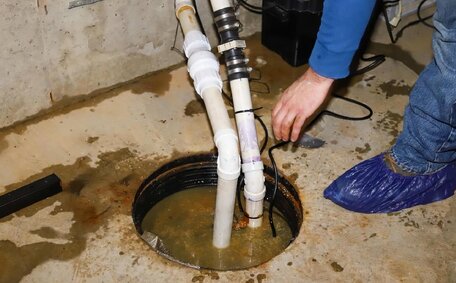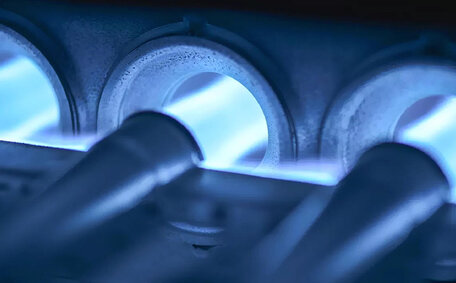Understanding the Importance of Regular Hot Water System Inspections
Regular maintenance of your hot water unit is crucial for preserving its efficiency and preventing breakdowns. During routine check-ups, plumbers can detect early signs your heater may have issues like corrosion, sediment buildup, or small leaks. Addressing these proactively can help prevent more significant repairs down the road.
Experts advise professional inspections of your water heater every 1-2 years to safeguard its longevity. This allows a licenced technician to assess functionality, flush water heater tanks, and replace worn parts if needed. The small upfront cost of regular maintenance is minor compared to the expense of purchasing a new water heater.
Regular servicing can extend a heater’s lifespan well beyond the typical 8-12 years without maintenance. With consistent inspections, your water heater can function reliably for 15-20 years. The peace of mind and opportunities to save money are well worth the investment.
By scheduling periodic plumbing inspections, you can keep your hot water operational, efficient, and safe for your home and family. Taking diligent care to avoid any unexpected failures or costly emergency calls over time is essential. Ultimately, protecting this essential system through regular check-ups is a non-negotiable part of responsible home maintenance.
How Often Should Hot Water Systems Be Inspected?
It’s typically recommended to have hot water systems professionally inspected every 1-2 years, potentially incorporating sediment flushing. This regular maintenance helps ensure optimal performance, efficiency, and safety.
For electric water heaters, annual inspections are ideal to check all components, ensuring your water heater needs are fully addressed. Should your hot water heater be a gas hot water model, it should be examined yearly to check burner operation, flue venting, gas lines for leaks, and to clear debris.
In regions with hard water, complex systems such as tankless or solar water heaters require yearly inspections to confirm they’re functioning correctly. Specialised units like a heat pump or solar hot water systems may require bi-annual tune-ups to meet manufacturer specifications.
The frequency of inspections should align with the type of water heater you have, but all systems benefit from preventive maintenance every 12-24 months. DIY flushing between professional visits can also prolong lifespan. Ultimately, following the manufacturer’s guidelines for your specific model is the best way to determine optimal inspection timelines.
Do-It-Yourself Inspections vs Professional Servicing
While homeowners can perform basic hot water system checks, professional evaluations provide more thorough inspections annually or biannually.
DIY tasks like checking pressure relief valves, flushing lines, or inspecting your tank for leaks can do wonders for maintenance between professional visits. However, only a licensed plumber has the expertise and tools to fully assess functionality or identify potential issues.
Pros can test components including those in gas water heaters, evaluate insulation efficiency, remove sediment, and assess part wear more comprehensively. They also flush your pipes and the entire system properly, ensuring the system maintains a good working condition by preventing damage from mineral buildup. Only professionals can confirm optimal efficiency meets manufacturers specifications.
Regular tune-ups prevent minor issues in your gas water unit from escalating, particularly those concerning temperature relief valves. Technicians may detect failing parts or small leaks early, avoiding system failure or other hazards.
While DIY flushing provides useful supplemental maintenance, ensure your hot water system serviced regularly for safety and longevity. Only licenced specialists have the skills to inspect tanks, pipes, and components fully, keeping your system running efficiently for years to come.
What to Look for During a Hot Water System Inspection
When inspecting your hot water system, start by visually examining the external tank, pipes, and valves. Look for any visible corrosion, mineral deposits, or leakage which can leak and signal your system needs professional system servicing. Notice any new or unusual noises when the system runs its cycle, like rumbling, hissing, or banging, and make sure your unit is inspected promptly.
Check your hot water functionality by running taps throughout your home, ensuring cold water temperature, volume, and pressure meet expectations. Fluctuations in water pressure can indicate problems like sediment buildup or failing heating elements. Compare hot tap readings at different locations to check for inconsistencies.
Inspect key external features like the pressure relief valve to ensure it’s undamaged, with the lever in the down position. Confirm the drain line exiting the valve slopes down to let water flow out not back in. Check sight glass for unusual debris or water levels.
For electric water heaters, ensure electrical cables and power supply show no damage, affirming that heating elements are seated correctly. For electric water heater units, ensure cables are damage-free and listen for any sounds indicating issues needing immediate attention.
While anode rods sit inside tanks and need a professional examination, perform a regular check for any corrosion or damage, pondering how old your components are and whether it’s time to sort out your water heater maintenance. Day-to-day inspections out your home detect many early issues prompt professional servicing can address before problems escalate or failures occur.
Checking Pressure Relief Valves
Temperature pressure relief valves, vital for safety, should be tested every six months to release any excess pressure from your system. You should manually test the valve at least once every 6 months to ensure it’s operating as it should.
To maintain your hot water unit safely:
- Locate the pressure relief valve on your hot water tank. It will have a lever and discharge pipe leading down from it.
- Begin by easing the lever up to let water flow for 30 seconds before carefully releasing it.
- Check that the water drained freely through the discharge pipe, leaving no obstructions.
- Inspect the valve and pipes for any signs of wear, corrosion, or leakage that would impair effectiveness.
- If water does not flow freely or any damage is visible, contact a qualified professional immediately to replace the valve.
An operational pressure relief valve is imperative for preventing hazardous pressure buildups, despite seeming inconsequential. Taking a few minutes twice a year to manually operate and inspect this simple device avoids catastrophic tank failures or explosions.
Inspecting for Leaks and Corrosion
Conducting regular inspections for leaks and corrosion is crucial to prevent risks or system breakdowns. Start by visually checking the tank exterior and connected pipes for any drips, rust, mineral deposits or damage.
Closely examine areas around inlet/outlet pipes, valves, the unit’s base, and joints for signs of wear. Timely detection and repair of small leaks can prevent extensive flooding issues in the future. Check below the tank for signs of drippage.
For electric water heater systems, inspect power cables and check the heating element for function and deterioration. On gas hot water heaters, it’s vital to test the fittings and pipes for gas leaks, which can be minor sources of carbon monoxide, by using a soapy solution to identify hissing sounds or bubbles.
If corrosion penetrates the inner tank lining, it can cause dangerous leaks to develop over time. Ignoring tiny leaks or surface corrosion can lead to deterioration and potential system failure. Have any drips, rust spots, or damaged parts repaired immediately.
While inspecting hardware, also check insulation wrap for degradation allowing heat or energy loss. Ultimately, regular servicing to fix minor issues promptly avoids safety hazards plus expensive repairs down the road.
Flushing Sediment Buildup
Sediment can accumulate at the bottom of your water tank over time, impacting water quality and necessitating regular removal. Flushing this debris every six months to 12 months improves efficiency and water quality.
Flushing helps to remove build up before it hardens or corrodes your water tank’s interior. It improves water flow, restores capacity to heat water lost to sediment, and washes out potentially harmful bacteria.
When I get my heater ready to flush, I start by turning off the power to the tank and attaching a hose to the drain valve at its base. Open the pressure relief valve at the top and let flush water out the drain hose for 5-10 minutes until it runs clear. Capture flushed water safely.
Once flushing is complete, close all valves and restart the unit. Discoloured water or large debris may indicate the need for professional tank descaling. Yearly flushing, along with tank inspections, is essential for optimal performance.
When Professional Help is Needed
It’s wise to call your plumber for hot water system inspections when DIY checks reveal issues beyond your capabilities or comfort level to address.
Warning signs like corrosion, major sediment buildup, leaks, strange noises, or drastic pressure/temperature changes can help indicate the need for expert assessments. Professionals have the tools and know-how to evaluate your water unit’s components and functionality accurately.
A thorough water heater inspection at least once year allows technicians to test elements, flush tanks properly, check ventilation in gas systems, assess part wear, and determine if replacements are required. They also ensure optimal efficiency is maintained.
Annual servicing by your local service agent, Paddington Plumbing, provides peace of mind your system is operating safely and efficiently. Our experts inspect all hardware, identify developing problems, and repair minor issues before they become significant. Preventative maintenance protects your investment.
If your system exhibits worrying symptoms, promptly book a professional inspection to prevent further issues. Such interventions are minor investments for the safety and efficacy of your system. Contact Paddington Plumbing at 1300 349 338 or [email protected] to schedule evaluations keeping your most essential utility running perfectly.
Types of Hot Water Systems and Maintenance Needs
Various types of water systems exist, each with specific maintenance requirements:
Electric Storage Tank Systems
Electric water heater storage tanks require yearly inspections to evaluate heating elements, remove sediment, and replace anode rods. You need water heater flushing to remove mineral deposits and sediment that reduce efficiency. Anode rods corrode over time, so their timely replacement is a simple way to extend your tank’s lifespan.
Gas Storage Tank Systems
Gas storage tank systems need annual flushings and anode rod replacements. Special attention should check burner function, gas valves, ventilation flues, and pipes for leaks. Professional cleaning of flame sensors may be needed if hot water flow becomes inconsistent.
Tankless Water Heaters
Tankless hot water systems need annual inspections to validate functionality, test temperature control, flush debris from pipes, and descale heat exchangers to maintain optimal efficiency ratings.
Solar Hot Water
Your solar water heater units last around 15-20 years but require careful maintenance every five years for longevity. Check your solar water heating panels yearly for damage, trim vegetation blocking sun access, and flush tanks to prevent sediment buildup reducing efficiency. Every 5 years, inspect glycol fluid pH levels and piping insulation.
Following the manufacturer’s recommendations for maintenance aligns with the specific requirements of your solar or hot water system in your home. Periodic professional servicing tailored to your unit’s needs ensures many years of reliable hot water delivery.
Maximizing Efficiency and Longevity
There are several key steps homeowners can take to maximise efficiency and extend the lifespan of their hot water systems:
Insulate Hot Water Pipes
Quality insulation on hot water pipes and tanks reduces standby heat loss, enhancing energy efficiency. Well-insulated systems reduce electricity or gas usage over time, helping to ensure your energy bills are in check.
Flush & Descale Regularly
Regular maintenance can involve flushing tanks and descaling heat exchangers every 6-12 months to remove sediment and mineral buildup impairing efficiency. Keeping components clear optimises hot water flow and heating performance.
Install Water-Saving Fixtures
Low-flow showerheads and faucet aerators reduce demand on water heating systems. This decreases wear and tear over time, prolonging lifespan.
Set Vacation Mode
When away for extended periods, switch to vacation mode so the system maintains a lower standby temperature. This reduces energy consumption and component strain during downtimes.
Schedule Professional Maintenance
In addition to DIY maintenance, annual professional tune-ups are vital for the longevity, safety, and energy efficiency of your system. Our experts can restore peak efficiency and detect issues early.
Small upgrades and regular maintenance can ensure your hot water system remains operational for over 15 years. Contact Paddington Plumbing today to optimise your hot water system.






